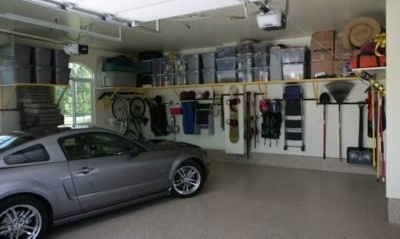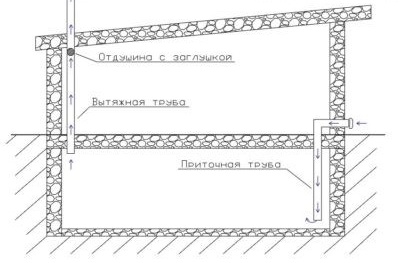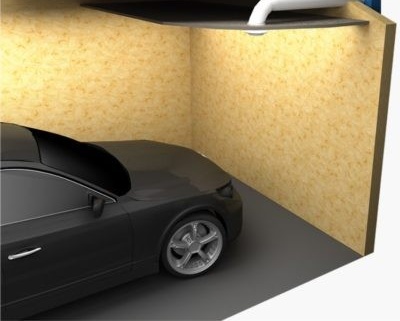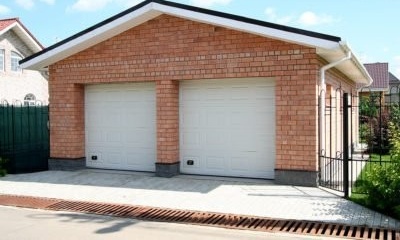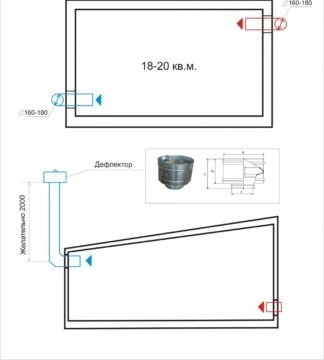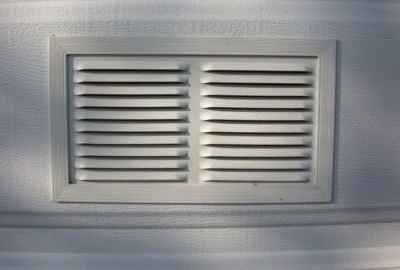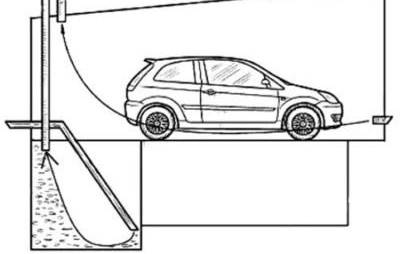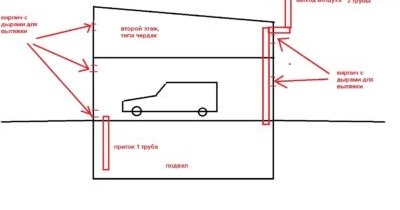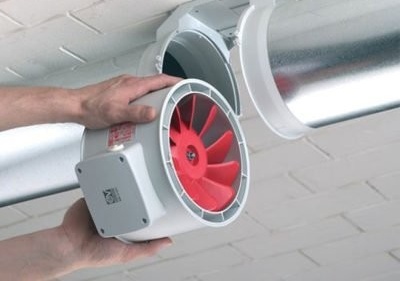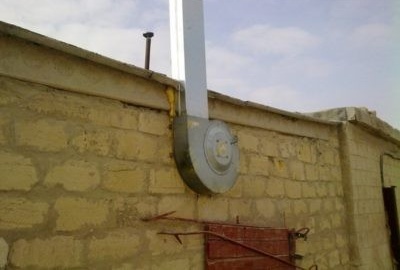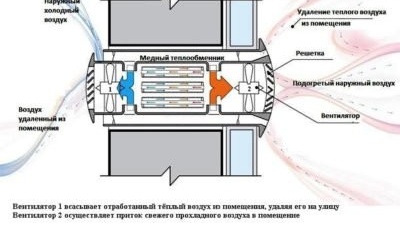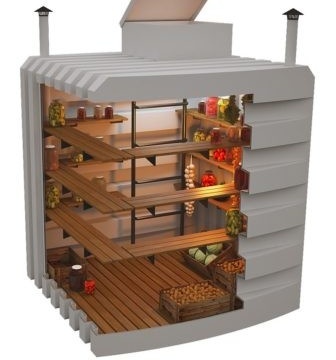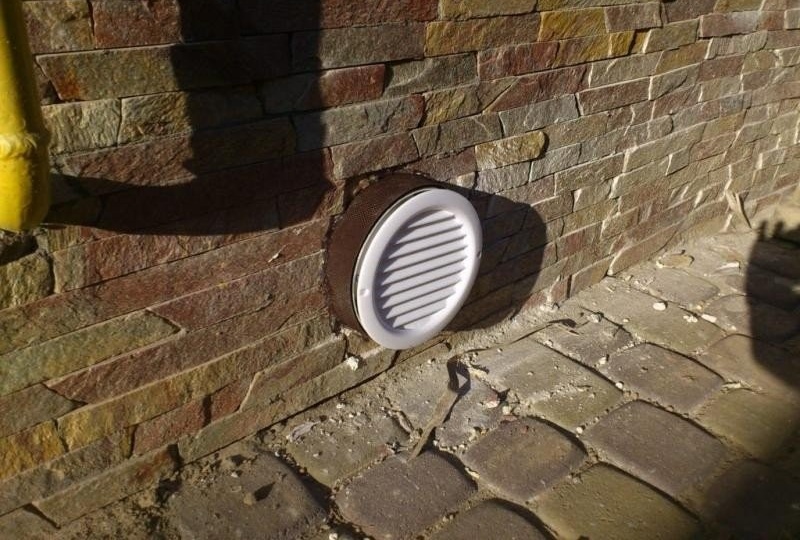How to make ventilation in the garage and the cellar under it - choosing the best solution
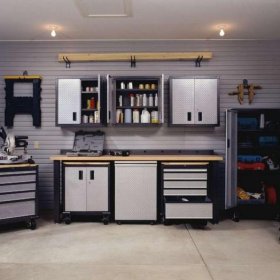
Vehicle owners are interested in ensuring the commercial appearance of a personal car for a long time. Most car owners are sure that storage in the garage extends the life of the car and reliably protects the body from corrosion processes. In the absence of an effective ventilation system, increased moisture concentration, stale air and toxic components adversely affect not only the vehicle, spare parts, automotive rubber, tools, but also food and blanks in the cellar. Garage ventilation allows you to prevent the effects of negative factors, which is easy to do with your own hands.
Content
Why is ventilation necessary in the garage?
Any room requires the organization of effective air circulation. A garage equipped with a basement or a viewing hole is no exception.
Ensuring effective air exchange allows you to remove condensate from the room, to remove exhaust fumes harmful to health, as well as toxic fumes from car care products stored in the garage.
The ventilation of the garage room performs a complex of serious tasks:
- Reduced moisture concentration associated with storing wet after a vehicle ride, as well as weather factors.
- Removal of condensate formed on the ceiling and walls of the room, as well as in the basement and the inspection hole as a result of sudden changes in temperature.
- The removal of toxic substances (exhaust gases, gasoline, oil and automotive chemicals) that are hazardous to human health outside the garage.
- Ensuring reliable drying of the vehicle, which helps protect the body, suspension elements and electronic components of the car from the harmful effects of corrosion processes.
- Protection of the metal surface of working tools in the room from rust.
- Extension of the service life of automotive rubber, sensitive to the effects of aggressive factors associated with the evaporation of gasoline and chemicals.
Regardless of what material the garage, brick, blocks or metal are made of, any room needs to ensure effective air circulation, which helps to reduce humidity.
It should be noted that a garage made of metal sheets is more prone to condensation on the inner surface of the ceiling and walls. This is due to the rapid heating and cooling of sheet metal as a result of natural temperature fluctuations.
Does the cellar need ventilation under the garage?
The cellar, located below the zero mark, it is important to reliably protect from moisture.
High humidity contributes to the spoilage of stocks of vegetables and fruits, causes the development of mold and fungus on the surface of walls, wooden shelves, and also causes corrosion of metal lids, covering cans with conservation.
Ensuring air circulation in the cellar, located under the garage, contributes to a favorable microclimate of the room, which allows to increase the duration of storage of agricultural products and workpieces.
In addition, exposure to a toxic environment negatively affects the health status of the owner of the premises. The lack of air exchange causes severe headaches, worsens the general condition and can cause poisoning by exhaust gases accumulated in the room, especially with incomplete combustion of fuel.
Do-it-yourself calculation, design and installation of supply and exhaust ventilation for a garage
Properly designed ventilation ensures the safety of the vehicle.
In order to ensure air circulation in the garage, the following air exchange systems are used:
- Natural ventilation of the room, the principle of which is based on the properties of warm air flows, naturally rise along the highways.
- A combined version combining natural air exchange with the use of mechanical devices.
- Mechanical circulation of air masses, carried out using special devices that provide forced air intake and exhaust.
Before starting work on the organization of an air ventilation system, one should determine the best option for an air exchange device.
Let us dwell in detail on the specifics of the calculation, the particularities of installation and the arrangement of these supply and exhaust systems.
Organization of natural ventilation
Naturally based ventilation based on the properties of air masses and the known laws of aerodynamics is the right choice for owners of garages equipped with basement storage.
The organization of air exchange, carried out in a natural way, does not require significant financial costs.
That is why the owners of garages prefer natural ventilation.
A careful approach to the calculation of natural air circulation helps prevent stagnation of air masses in the room.
Air enters the garage through the air inlets at the bottom of the garage doors, on which the blinds or grille are installed.
The incoming air flow passes along the vehicle, including under the bottom, combines with the air in the room and naturally enters the exhaust duct equipped with a deflector.
The deflector is installed on the outside of the room on the chimney, located on the opposite side from the gate. Reliable functioning of this design is ensured when the duct rises above the roof level by more than 0.5 meters. Thermal insulation of the output line prevents condensation.
The principle of natural circulation is based on different densities of external and internal air masses.
The calculation of the cross section of the ventilation pipe depends on the area of the garage. The diameter of the highway increases by 1.5 cm per square meter of floor space. This ensures optimal circulation of air masses.
To perform ventilation installation work, prepare:
- An electric drill or hammer required to make holes in the metal and stone walls of the building.
- A grinder used for cutting airways.
- Pipes made of plastic or metal.
- Baffle mounted baffle.
- Protective nets or gratings necessary to protect the input channels.
Perform the calculation and installation of communications according to the following algorithm:
- Calculate the cross-sectional area of the ventilation ducts. Given that for every square meter of the area, the hole cross section increases by 1.5 cm, we determine the size of the outlet channel. For example, for a garage with a size of 2.8x5.5 m, the diameter of the hole will be 23 cm. If two holes are planned, then, accordingly, reduce the design diameter by 2 times.
- Perform inlet doors or on the frontal plane of the garage inlet ventilation ducts located at a distance of 10-15 cm from the zero mark.
- Drill a hole on the opposite side from the entrance, located from the ceiling at a distance of about 10 cm.
- Fix the outlet pipe in the hole obtained, ensuring that the elevation above the top point of the building is more than 0.5 m. Install a deflector at the top of the outlet line, which accelerates the removal of air from the garage.
- Seal the gaps between the walls and the mains using sealant.
- Install metal grilles on the outside holes to prevent rodents from entering the garage.
However, the system, despite the cheapness and ease of installation, has a number of negative aspects caused by climate and weather factors:
- in the summer, the functioning of natural ventilation is difficult, due to the elevated temperature outside the garage;
- indoor drafts create adverse conditions for motorists spending a long time in the garage;
- small dimensions of the room and small temperature difference make it difficult to intensive air exchange;
- different directions of the air masses do not always allow the air flow to enter the receiving hole;
- inlet and outlet lines need to be cleaned of dirt, ice and dust, which impede normal air exchange.
Remember that the effectiveness of natural ventilation is ensured at an ambient temperature of not more than 15 degrees Celsius. During the hot season, air exchange is deteriorating.
Guided by the above recommendations, it is not difficult to equip the garage yourself with a natural ventilation system.
Ensuring the natural exchange of air has positively proven itself in unheated garage spaces.
The device of the combined air exchange system
The combined air exchange device makes it possible to forcibly provide air circulation in case of difficult natural circulation.
The general principles of operation of the ventilation device are completely analogous to the natural circulation system and differ only in the presence of an electric fan, which is mounted additionally.
With significant changes in temperature and in windy times, the fan in the off state will additionally stimulate the movement of air masses due to the free rotation of the impeller.
When purchasing a fan for a combined air exchange system, pay attention to the possibility of continuous operation and installed power, which should not exceed 100-150 watts.
You can install the exhaust fan in the zone of intersection of the roof with the exhaust shaft or mounted in the wall.
The presence of an electric fan activates the air circulation mechanism and ensures the operation of the ventilation system regardless of natural factors. If the need arises, it is possible to automatically switch on the combined ventilation system using an electric timer.
The low costs associated with the purchase of a fan, as well as the low consumption of electric energy, make the combined air circulation system popular with many vehicle lovers.
Installation of forced air circulation equipment
The device of mechanical ventilation of a garage room in which an electric hood is used has the maximum degree of efficiency.
Forced ventilation ensures active circulation of air masses regardless of weather factors.
The design of the forced air exchange system provides for the installation of supply and exhaust ventilation, including filter elements, electric fans, which provide active replacement of air masses. The output of contaminated air is produced through the outlet line using an electric exhaust fan.
A design feature of the forced ventilation system is the ability to control the intensity of circulation due to changes in the speed of movement of air masses. Equipping the forced ventilation system with filters allows you to remove dust particles, and the use of heaters ensures optimal temperature conditions in the room.
The mechanical air exchange system is manufactured in the following structural solutions:
- In the form of independent modules providing individual air flow and extracting air masses from the room. The use of electrical communications and special sensors combines independent modules into a common design;
- In a monoblock form, providing exhaust air exhaust and fresh air. Equipping a monoblock with a plate-type recuperator reduces the consumption of electrical energy needed to heat the air entering the room.
The installation of a forced air exchange device does not need to perform preliminary calculations of the area of the room and the size of the highway. You should focus on the installed capacity of the ventilation equipment and the level of costs associated with the acquisition and installation of a ventilation device.
Remember, in winter, the installation of mechanical air exchange will provide reliable ventilation and create a favorable microclimate in the garage.
For a garage below the zero mark, this ventilation method is the optimal solution.
Providing air exchange in the inspection pit
The use of a viewing hole allows vehicle owners to maintain the vehicle’s operational technical condition.
When performing work in the pit is the necessary tool, various keys, as well as electrical communications, allowing you to connect electrical equipment and provide reliable lighting of the work site. In the inspection pit cans of fuel and various automotive equipment can be stored.
Natural ventilation of the inspection pit ensures normal air exchange. The pit can be equipped with an autonomous ventilation system using pipes with a diameter of 10-15 cm.
Locate the air lines as follows:
- place the inlet pipe in a corner at a distance of 10 centimeters from the base of the pit;
- Place the exhaust line in the far corner at a distance of 10-15 centimeters from the ceiling of the garage and take it outside the premises, providing the necessary elevation above the roof level.
We recommend that you cover the inspection pit in the cold season to prevent moisture from entering and sudden changes in temperature.
Related videos
After watching the video, you can get additional information about the device ventilation system.
How to make cellar ventilation under the garage?
If the garage is equipped with a basement, then it must be additionally ventilated. To do this, you will need to build a separate trunk of the exhaust ventilation system.
Exhaust ventilation is mandatory for basements located in garages. In the basement, as a rule, it is rather damp and garage ventilation is not able to reduce the humidity in the room.
Storage of agricultural products and home preservation is allowed subject to reliable ventilation of the basement.
Indoor air exchange can be carried out naturally, combined or mechanically. However, conventional natural ventilation is able to provide a favorable basement microclimate. It is not difficult to independently install this design using sewer pipes made of plastic.
When installing the ventilation system, observe the following requirements:
- Carefully calculate the diameter of the holes required to supply the air lines.
- Position the supply pipe at a distance of 0.2–0.5 m from the base of the cellar and take it outside the premises.
- Ensure that the pipes are in opposite parts of the cellar.
- Mount the exhaust shaft in the ceiling of the basement and lift it vertically through the roof of the garage.
- Heat the exhaust pipe to prevent condensation.
- Close the external outlet of the air shaft with a protective cap.
- Provide a minimum of bends of highways and radius turns.
- Use pipes of the same diameter to ensure equal air circulation.
To remove condensate on the exhaust line, it is advisable to provide for the installation of a tank to collect moisture.
A more efficient ventilation of the basement in the winter can provide a forced air exchange system. However, natural ventilation in the basement is sufficient to ensure the preservation of vegetables and fruits.
Many vehicle owners with summer cottages equip vegetable pits in garages designed to store their crops.
The design of the vegetable pit is similar to the basement, however, differs in reduced size. You can save the harvest in the pit only in the absence of dampness in the room.
Regardless of the size of the pit, a prerequisite is the supply and exhaust ventilation device.
Without air inflow, a temperature difference inside and outside the room will inevitably lead to the formation of condensation on the walls of the pit and the development of mold. Only constant ventilation can guarantee the safety of agricultural products and maintain the humidity necessary for storing vegetables due to the influx of external air.
To ventilate the pit, you can install a pipe in the center of the pit through which warm and humidified air can exit. This simple method of circulation will keep the room dry. If moisture does appear, extend the pipe or mount an additional fan on the line. However, do not experiment. Ensure reliable air exchange will allow the supply and exhaust ventilation method. Calculation of the area of pipes and installation features are similar to the performance of work for the basement.
Garage owners do not always equip basements or vegetable pits. In some situations, it is more convenient and faster to install a caisson - a one-piece waterproof design made of plastic.
It is convenient to store blanks and agricultural products in the caisson, for which it is necessary to equip the caisson with a ventilation system.There are various solutions involving the use of forced ventilation or the use of small fans. Regardless of the design features of the air exchange system, it is important to ensure optimal temperature conditions and humidity inside the tank.
By installing ventilation equipment in the garage on your own, you can organize natural ventilation or mount expensive equipment. To ensure air exchange in a garage equipped with a cellar, natural or combined circulation is sufficient, and for underground parking, forced air supply is required. The choice of air exchange method is determined by the financial capabilities of the vehicle owner and external factors. It is important to equip the garage with an effective air circulation system. The ventilation of the garage premises, taking into account the above recommendations, will ensure efficient air exchange and create a favorable microclimate. This is the only way to protect the vehicle from the harmful effects of corrosion processes, as well as provide normal storage conditions for products in the garage basement.
